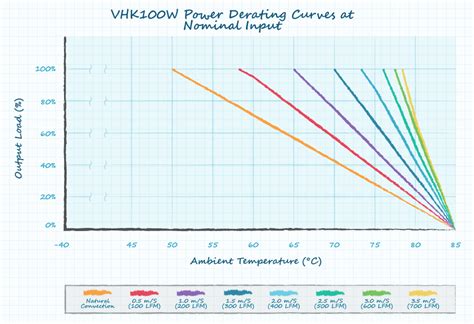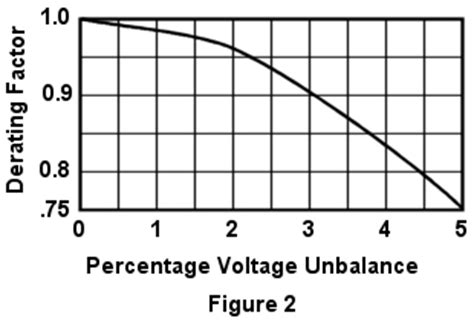What is Voltage Derating?
Voltage derating is the practice of using a capacitor at a voltage lower than its rated voltage to ensure reliable operation and extend its lifespan. The rated voltage of a capacitor is the maximum voltage that can be continuously applied across its terminals without causing damage or degrading its performance.
However, operating a capacitor at its rated voltage for extended periods can lead to increased stress on the dielectric material, resulting in a higher probability of failure. By derating the voltage, designers can reduce the stress on the capacitor and improve its long-term reliability.
Factors Affecting Voltage Derating
Several factors influence the need for voltage derating in ceramic capacitors:
- Dielectric Material: The type of dielectric material used in the capacitor affects its voltage derating requirements. Some common dielectric materials used in ceramic capacitors include:
- Class 1 (C0G/NP0): These capacitors have the lowest voltage derating requirements due to their stable dielectric properties.
- Class 2 (X7R, X5R): These capacitors have higher voltage derating requirements compared to Class 1 due to their ferroelectric properties and higher dielectric constant.
-
Class 3 (Y5V, Z5U): These capacitors have the highest voltage derating requirements due to their strong ferroelectric properties and high dielectric constant.
-
Operating Temperature: The operating temperature of the capacitor also affects its voltage derating requirements. As the temperature increases, the dielectric material’s ability to withstand voltage stress decreases. Therefore, higher temperatures necessitate greater voltage derating to ensure reliable operation.
-
Capacitance Value: The capacitance value of the capacitor can also impact its voltage derating requirements. Higher capacitance values typically require higher voltage derating due to the increased amount of energy stored in the capacitor.
-
Application Requirements: The specific requirements of the application, such as the expected lifespan, reliability targets, and environmental conditions, can influence the voltage derating guidelines for ceramic capacitors.
Voltage Derating Guidelines
To ensure the reliable operation of ceramic capacitors, manufacturers provide voltage derating guidelines based on the dielectric material and other factors. These guidelines recommend the maximum percentage of the rated voltage at which the capacitor should be operated for optimal performance and longevity.
The following table provides general voltage derating guidelines for different classes of ceramic capacitors:
| Dielectric Class | Voltage Derating Percentage |
|---|---|
| Class 1 (C0G/NP0) | 100% |
| Class 2 (X7R, X5R) | 50-80% |
| Class 3 (Y5V, Z5U) | 25-50% |
It is important to note that these are general guidelines, and specific recommendations may vary depending on the manufacturer and the capacitor’s specifications. Always refer to the manufacturer’s datasheets and application notes for the most accurate voltage derating information.
Voltage Derating Example
Let’s consider an example to illustrate the application of voltage derating. Suppose we have a 16V rated X7R ceramic capacitor, and we want to determine the maximum voltage at which we should operate it for reliable performance.
Based on the voltage derating guidelines for Class 2 capacitors, we should operate the capacitor at 50-80% of its rated voltage. Taking a conservative approach, we can choose to operate it at 60% of its rated voltage.
Maximum operating voltage = Rated voltage × Derating percentage
Maximum operating voltage = 16V × 0.60
Maximum operating voltage = 9.6V
Therefore, to ensure reliable operation, we should limit the voltage across the capacitor to 9.6V or less.

Importance of Voltage Derating
Voltage derating is crucial for several reasons:
-
Improved Reliability: By operating ceramic capacitors at a lower voltage than their rated voltage, designers can reduce the stress on the dielectric material and minimize the risk of capacitor failure. This leads to improved overall reliability of the electronic circuit.
-
Extended Lifespan: Voltage derating helps extend the lifespan of ceramic capacitors. Operating capacitors at lower voltages reduces the rate of degradation of the dielectric material, allowing the capacitors to maintain their performance characteristics for a longer period.
-
Reduced Failure Rates: Voltage derating minimizes the occurrence of capacitor failures due to voltage stress. By reducing the voltage applied to the capacitor, designers can mitigate the risk of dielectric breakdown, shorts, or other failure mechanisms.
-
Enhanced Safety: In critical applications where capacitor failure can have severe consequences, such as in medical devices or aerospace systems, voltage derating is essential to ensure the safety and reliability of the overall system.
-
Cost Savings: By extending the lifespan and reducing the failure rates of ceramic capacitors, voltage derating can lead to cost savings in the long run. It minimizes the need for frequent replacements and reduces the costs associated with system downtime and maintenance.

Frequently Asked Questions (FAQ)
-
What happens if I operate a ceramic capacitor at its rated voltage?
Operating a ceramic capacitor at its rated voltage for extended periods can lead to increased stress on the dielectric material, potentially causing degradation of performance and a higher risk of failure. It is generally recommended to derate the voltage to ensure reliable operation and extend the capacitor’s lifespan. -
Can I use a capacitor with a higher voltage rating than my application requires?
Yes, using a capacitor with a higher voltage rating than required is a common practice. It provides an additional safety margin and allows for voltage derating. However, keep in mind that capacitors with higher voltage ratings may have larger physical sizes and higher costs. -
How does temperature affect voltage derating requirements?
Higher operating temperatures reduce the dielectric material’s ability to withstand voltage stress. As a result, higher temperatures require greater voltage derating to ensure reliable operation. Always consider the expected operating temperature range when determining the appropriate voltage derating for your application. -
Are voltage derating guidelines the same for all manufacturers?
While voltage derating guidelines are generally similar across manufacturers, there can be variations based on the specific capacitor series and the manufacturer’s recommendations. It is essential to refer to the manufacturer’s datasheets and application notes for the most accurate voltage derating information for a particular capacitor. -
What are the consequences of not applying voltage derating?
Not applying voltage derating can lead to several negative consequences, including reduced reliability, shortened lifespan, increased failure rates, and potential safety hazards. It is crucial to follow voltage derating guidelines to ensure the proper functioning and longevity of ceramic capacitors in your electronic circuits.

Conclusion
Voltage derating is a critical aspect of designing reliable electronic circuits using ceramic capacitors. By operating capacitors at a lower voltage than their rated voltage, designers can reduce stress on the dielectric material, improve reliability, extend lifespan, and minimize the risk of failures.
Understanding the factors that influence voltage derating, such as the dielectric material, operating temperature, capacitance value, and application requirements, is essential for making informed design decisions. Following the voltage derating guidelines provided by manufacturers and considering the specific needs of your application will help ensure the optimal performance and longevity of your ceramic capacitors.
By prioritizing voltage derating in your design process, you can enhance the overall reliability, safety, and cost-effectiveness of your electronic systems. Always refer to manufacturer datasheets and application notes for the most accurate and up-to-date information on voltage derating for your specific ceramic capacitors.

No responses yet